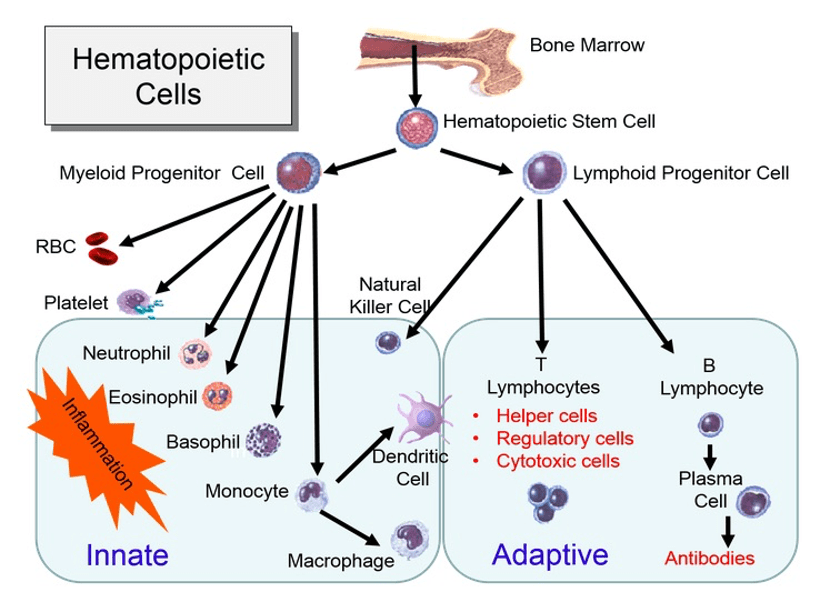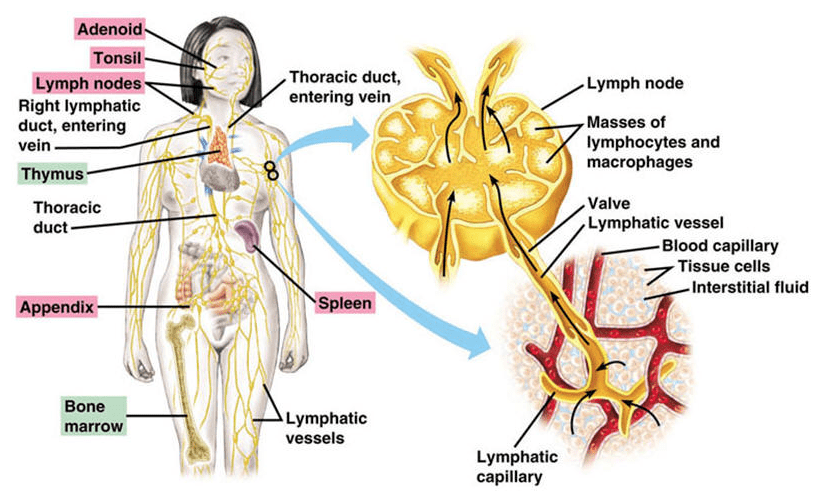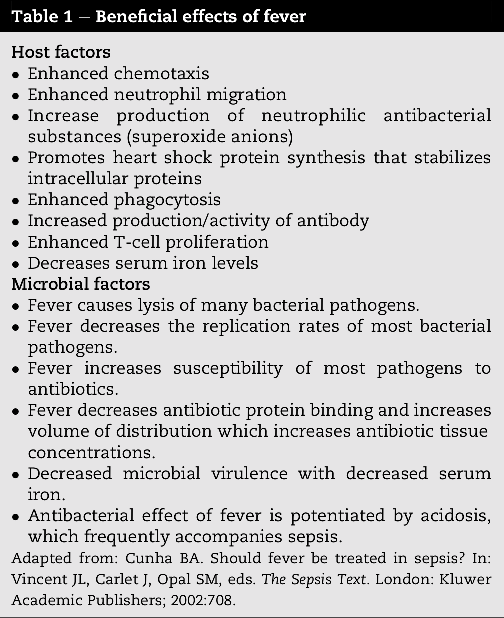To say that one system is more important than any other would be a lie, however the immune system is often undervalued and not considered in the pathology of disease. Therefore, in regards to chronic disease, it is easy to say that the immune system is one of the most important systems in the body.
The immune system is made up of white blood cells that are made in our bone marrow. They regulate the body’s resistance and fighting ability to invading pathogens and internal disturbances.
Every day we are bombarded with possible causes for infection. White blood cells, which permeate every tissue in the body, neutralise these dangers and produce antibodies to hinder future invasion of the same pathogen.
The immune system is not only responsible for the removal of external pathogens but also plays a role in the clean-up of cells after apoptosis (cell death) and the removal of malignant or ‘abnormal’ cells.
The immune system is a network of cells, tissues, and organs that work together to defend the body against attacks by “foreign” invaders. It is amazingly complex.
The organs of the immune system are the thymus, lymph nods, bone marrow, spleen, tonsils, adenoids, Peyer’s patches and appendix.
White blood cells (leukocytes) play a very significant role in the immune system. They are found in the blood, tissue fluids surrounding cells and in the lymphatic system. These cells work together to destroy bacteria and viruses. The different types of white blood cells include: Neutrophils, Eosinophils, Basophils, Monocytes, Lymphocytes, B cells, T cells, Helper T cells, Suppressor T cells, Killer T cells, Granulocytes, Plasma cells, Phagocytes, Dendritic cells, Natural Killer cells, and Macrophages.

Defense System:
The protection provided by the immune system is divided into two types:
- Innate immune system
- Response is non-specific
- Exposure leads to immediate maximal response
- No immunological memory
- Adaptive immune system
- Pathogen and antigen specific response
- Lag time between exposure, recognition and maximal response
- Exposure leads to immunological memory
The innate immune system:
As the innate immune system provides immediate defense against infection it is armed with:
- Anatomical barriers
Physical, chemical and biological barriers, which are acting as a first line of defense. (Skin, mucus in nose, saliva, gastric acid, digestive enzymes, tears, sweat, gut flora..)
- Inflammation
Inflammation is one of the first responses of the immune system to infection or irritation. When tissue is damaged and pathogens are able to overcome the body’s first line of defence, chemicals are released to stimulate basophils to produce and release the chemical called histamine. Histamine redirects blood flow to the injured area. With more blood flow there is an increased numbers of phagocytes in the area to destroy any pathogens. Because of the increase in the amount of blood present, the area becomes red and swollen. The basophils also secrete the chemical heparin that prevents blood clotting. In more severe infections the inflammation can be more widespread and accompanied by a fever. The fever is brought by chemicals called pyrogens. The increased temperature is very beneficial as it aids in the destruction of the pathogens. Also involved in the inflammatory response is another group of chemicals called prostaglandins. These are released from cells damaged by the pathogen and act with the histamine to redirect the flow of blood of blood to the injured area.
- Basophils are important in inflammatory reactions.
- Eosinophil’s help in the destruction of macro-parasites such as worms, by secreting digestive enzymes into them. Eosinophil’s also take part in allergic reactions and support an inflammatory response.

The adaptive immune system:
Lymphocytes originate in the bone marrow but migrate to parts of the lymphatic system such as the lymph nodes, spleen, and thymus. The lymphatic system is a series of vessels, intercepted by enlarged ‘mazes’ of canals called nodes that return tissue fluid back to the circulatory system. Pathogens become trapped in the lymph nodes where they are systematically attacked by both lymphocytes and macrophages. There are two main types of lymphatic cells, T cells and B cells.
This system relies on antibodies, which are produced by specific immune cells (called B cells) in response to the antigens on the surface of the invading pathogens.
When an antigen is detected by a macrophage, this causes the T cells to become activated. The activation of T cells by a specific antigen is called cell-mediated immunity. The body contains millions of different T cells, each able to respond to one specific antigen.
The T cells secrete interleukin 2, which causes the proliferation of certain cytotoxic T cells and B cells. T cells stimulate B cells to divide, forming plasma cells that are able to produce antibodies and memory B cells.
If the same antigen enters the body later, the memory B cells divide to make more plasma cells and memory cells that can protect against future attacks by the same antigen.
When the T cells activate (stimulate) the B cells to divide into plasma cells, this is called antibody-mediated immunity.
Immunodeficiency Disorder
An immunodeficiency disorder is a medical name given to unexplainable symptoms / diseases which show the characteristic of a weakened immune system.
A weakened immune system is caused by acute / chronic inflammation. Deficiencies, infections, toxins, diet, food allergies / sensitivities, leaky gut, stress, hormonal imbalances, metabolic syndrome, trauma, chemotherapy, surgery, lack of sleep, lack of exercise…
This weakness can ultimately set up the pathway for the growth of cancer, as cancer not only requires abnormal cells to exist, it also needs the right environment, a suppression of the body’s immune system to grow.
Immunodeficiency disorders are often masked as common diseases such as chronic UTIs, chronic bronchitis, sinus infections, frequent colds and or flu, tonsillitis, recurrent pneumonia, yeast infection, cancer, AIDS, hepatitis, leukaemia….
Autoimmune Disease
Autoimmune disease is the flip side of the coin and is an overactive immune system. White blood cells receive misinformation and begin attacking the body's own cells. As such they can break down, remove or destroy any of the bodies biological and chemical functions. Presently there are almost 100 suspected autoimmune conditions which can present themselves in any manor or form.
All autoimmune diseases share common features such as:
- Deregulated inflammatory pathways
- Massive release of auto-antibodies that attack certain tissues
- Excess of inflammatory cytokines
- Destructing of target tissue
Some common types of auto-immune conditions are:
Hashimoto's, graves, lupus, rheumatoid arthritis, psoriasis, inflammatory bowel disease, Type 1-Diabetes, multiple sclerosis, Sjogren’s syndrome.
Causes for an overactive immune system are:
Acute and chronic inflammation, deficiencies, infections, toxin, diet, food allergies / sensitivities, leaky gut, stress, hormonal imbalances, metabolic syndrome, trauma, chemotherapy, surgery, lack of sleep, lack of exercise can all be causative factors and triggers for an autoimmune disease.
Symptoms of general immune dysfunction:
- Allergies - sinus, hay fever, asthma, dermatitis, hives etc.
- Skin rashes and inflammations
- Chemical and food sensitivities
- Auto-immune diseases
- Chronic Fatigue Syndrome and Fibromyalgia
- Recurrent viral, bacterial and parasitic infections
The Lymphatic System
The lymphatic system is part of the immune system and involves an extensive network of vessels that passes through almost all of our tissues to allow for the movement of a fluid called lymph. Lymph nodes are connected to the lymph vessel functioning as filter systems.
Function of the lymphatic System:
- Returns fluid from the tissues to the heart
- Helps large molecules such as hormones, and nutrients enter the blood
- Works as Immune Surveillance to keep infections under control
The lymphatic System quietly plays a vital supporting role to both the cardiovascular and Immune system.
Where does the Lymph come from?
The blood in the arteries is under high pressure to reach every cell in the body. Arteries in the process branch out and get narrower and narrower from arterioles and eventually becoming capillaries. Capillaries are only one cell thick and slightly porous. Red blood cells are too big to get through the pores but proteins and hormones make it through.
Every day 20 litres of fluid water containing proteins are sifting through the pores and becoming part of the interstitial fluid of the cells. Around 17 litres are quickly reabsorbed into the capillaries, leaving 3 litres of fluid behind in the tissues each day. These 3 litres of fluid need to find its way back into the blood so that the blood and interstitial fluid volume stays constant. That’s where the lymphatic vessels come into play. They collect excess interstitial fluid and return it to the blood. As soon as the interstitial fluid is in the lymph vessels it is called lymph.
The lymph is moved and pushed by smooth muscles of nearby arteries and squeezing of skeletal muscles which are contracting throughout the day. This keeps the lymph from flowing backwards as the lymph vessels contain valves similar to veins. On the way, there are around 600 lymph nodes which basically work as checkpoints and monitor as well as cleanse the lymph as it filters through. Lymph nodes are between a few millimetres to 1-2 cm in size.
The lymph nodes are able to detect when harmful organisms have made their way into the body, which prompts them to make more infection-fighting white blood cells called lymphocytes.
Eventually the lymph vessels reach the larger lymphatic vessel located at the neck called thoracic duct. The thoracic duct dumps cleaned lymph fluid back into the veins and this cycle continues on and on— which is why circulation is important. Proper circulation allows for the system to run smoothly and prevent tissue from becoming enlarged and swollen with excess waste.

We have also special lymph organs such as the:
Tonsils:
The tonsils are a pair of soft tissue masses located at the rear of the throat. Being part of the immune system, they try to remove any pathogens before they can enter the GI tract or lungs.
Peyer’s Patches:
Peyer's patches are small masses of lymphatic tissue found throughout the ileum region of the small intestine. Also known as aggregated lymphoid nodules, they form an important part of the immune system by monitoring intestinal bacteria populations and preventing the growth of pathogenic bacteria in the intestines.
Appendix:
The appendix is a small, pouch-like sac of tissue that is located in the first part of the colon (cecum) in the lower- right abdomen. It contains a bunch of lymphoid tissue to destroy any remaining bacteria before it can breach the intestinal wall.
Adenoids:
Adenoids are glands located in the roof of the mouth, behind the soft palate where the nose connects to the throat. The adenoids produce antibodies that help fight infections. Typically, the adenoids shrink during adolescence and may disappear by adulthood.
Thymus:
Most active in the neonatal and pre-adolescent period. It atrophies after puberty.
Spleen:
The spleen is the size of a fist and sits on the left side below the diaphragm, above the stomach. The spleen filters out antibody-coated bacteria and produces macrophages, B lymphocytes and T lymphocytes. In a sense it is like a giant lymph node although unlike a lymph node it filters blood not lymph fluid. The spleen also destroys old RBC, breaks them down and recycles its constituents.
Lymph nodes and their important role in the Immune System
Lymph nodes house T cells that directly attack invaders and manage the immune system, B cells that secrete antibodies into the blood, macrophages that eat up foreign substances, and reticular cells that make the stroma scaffolding network that supports all the other cells in lymphoid tissues.
When there’s a problem, such as infection, injury, or cancer, the node or the group of lymph nodes in that area may swell or enlarge as they work to filter out the “bad” cells. This may be called lymphadenopathy.
Some areas where lymph nodes commonly swell are in the neck, groin, and underarms. In most cases, only one area of nodes swells at a time. When more than one area of lymph nodes is swollen it’s called generalized lymphadenopathy. Some infections (such as strep throat and chicken pox), certain medicines, immune system diseases, and cancers like lymphoma and leukemia can cause this kind of swelling.
Cancer that starts in another part of the body and spreads to the lymph nodes is called a metastasis. Even when cancer spreads to the lymph nodes, it is still named after the area of the body where it started.
Lymph nodes play an important role in cancer staging see chapter: ‘ Understanding cancer'
A congested lymphatic system can lead to serious illnesses and chronic diseases which stem from a weakened immune system. A clog in your lymphatic “drains” can lead to the accumulation of toxins which the body initially tries to remove. Perhaps your symptoms of body rigidity, headaches, bloating, skin concerns, and cold extremities are actually a result of a sluggish lymphatic system that needs improving.
Symptoms and signs for an overly stressed lymphatic system:
- Swelling in lymph nodes
- Muscle aches and pains
- Joint pains
- Sore throat and getting cols more often
- Frequent infections and viruses
- Fibromyalgia
- Arthritis
- Cancer formation
Recommendation to improve lymphatic system function:
- Adequate hydration, drinking enough water is very important as the lymphatic system is primarily composed of water.
- Exercise, it increases the oxygen supply to tissues and cells and stimulates blood circulation. A mini trampoline (rebounder) is extremely beneficial because when the body moves against gravity, the lymphatic system is stimulated to pull lymph fluid carrying toxins through the vessels and circulate.
- Getting enough sleep
- Reducing stress
- Follow an anti-inflammatory diet
- Infra-red sauna to perspire toxins (the use of sauna is not recommended for patients who have had numerous lymph nodes removed as it can increase lymphedema. For example, a breast cancer patient, with removed lymph nodes are treated with hyperthermia by leaving the arm outside of the dome or Heckel bed).
- Lymphatic massage therapy (promotes the flow and drainage of lymph through the body)
- Dry-brushing of the skin
- Chiropractic Care (any obstruction on the upper chest region can influence the final dumping of toxins from the lymphatic system for cleansing)
- Herbs for lymphatic drainage are: Calendula officinalis, Astralagus, Dandelion, Gotu Kola, Red clover, Manjistha, Echinacea, Ginger….
Fever is the natural response of our immune system
Fever confers benefits to the host by enhancing chemotaxis and neutrophil migration, promoting heat shock protein synthesis, enhancing phagocytosis and lowering serum iron levels-to name a few.
Also it decreases the capacity of infecting micro-organism by damaging their viability, and decreasing their replication and virulence.
"How antipyretic treatment of fever became so widespread remains an enigma of medicine. In the current era of "evidence-based medicine," it is incredible to me that the treatment of fever continues with no scientific or clinical base." Burke A. Cunha MD


Technological, H. (n.d.). Letters to the Editor Reply to “ Fever myths and misconceptions : The beneficial effects of fever as a critical component of host defenses against infection ” by Cunha et al Fever myths and misconceptions : The beneficial effects of fever as a critical component of host defenses against infection. https://doi.org/10.1016/j.hrtlng.2011.07.002
In a large study involving 205,487 children aged 6 to 7 years from 73 centres in 31 countries, a New Zealand group found paracetamol in the first year of life was associated with increased risk of asthma. A link with rhino conjunctivitis and eczema was also observed.
Beasley R1, Clayton T, Crane J, von Mutius E, Lai CK, Montefort S, S. A. I. P. T. S. G. (n.d.). Association between paracetamol use in infancy and childhood, and risk of asthma, rhinoconjunctivitis, and eczema in children aged 6-7 years: analysis from Phase Three of the ISAAC programme. Lancet. 2008 Sep 20; 372(9643). https://doi.org/10.1016/S0140-6736(08)61445-2
Treatment:
The immune system is involved in any kind of dis-ease process of the body and therefore affected by numerous factors. It is of utmost importance that these factors are removed as otherwise any treatment is only a short term solution. Diseases are never treated in Functional Medicine, instead numerous individual causes are treated.
Questions pertaining to the function of a patient’s immune system are very limited as the immune system is intimately linked with every other system in the body. Therefore, to obtain a picture of a patient’s current immune status, a practitioner / coach must refer to it by questioning all other systems.
Immunotherapy and Vaccines as Cancer Treatment
Many clinics especially in Mexico, China, Bahamas use vaccines to treat cancer patients. Often these treatments are sold (highly priced) with the conviction being a cure. Unfortunately this is not really true. Sure there are cases where these treatments helped to reduce tumour loads but there are also cases where the treatments didn’t do anything.
If a cancer patient wants to try out vaccine treatments then it is important that the environment of the body is addressed first. Vaccines work by stimulating the immune system to mount a defence against a cancer cell by giving information to the immune system about how they work. Why put immune soldiers into a weakened immune system and hostile environment? It makes common sense to address deficiencies, hormonal imbalances and reduce all other burdens on the immune system…
There are many different types of cancer vaccines available: Antigen vaccines, tumour cell vaccines, and dendritic cell vaccines.
Resources are not needed for this lesson but can be used to further knowledge:
For Example: Any Anatomy & Physiology textbook
Book by Sarah Ballantyne: “The Paleo Approach: Reverse Autoimmune Disease and Heal your Body.”
